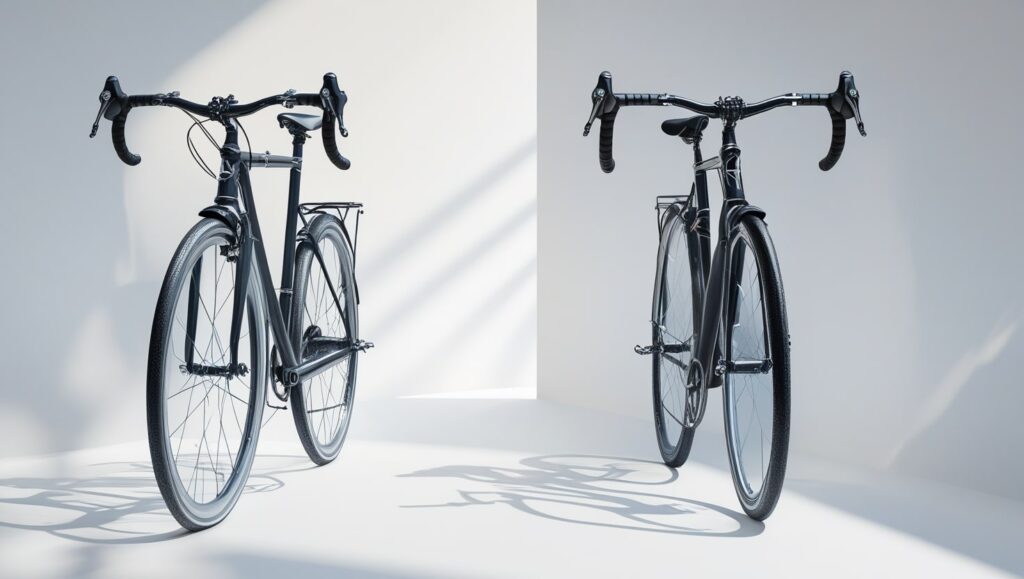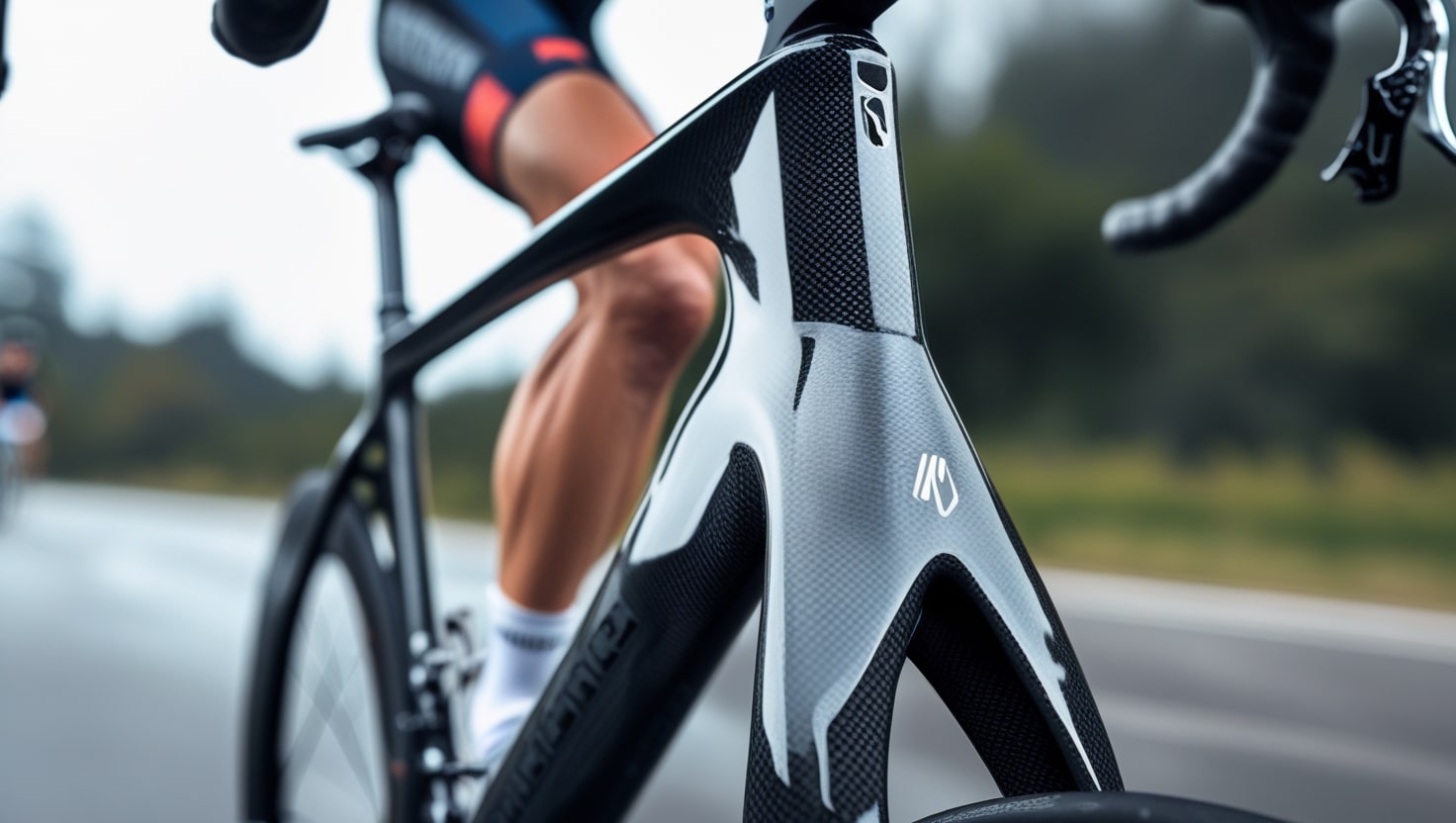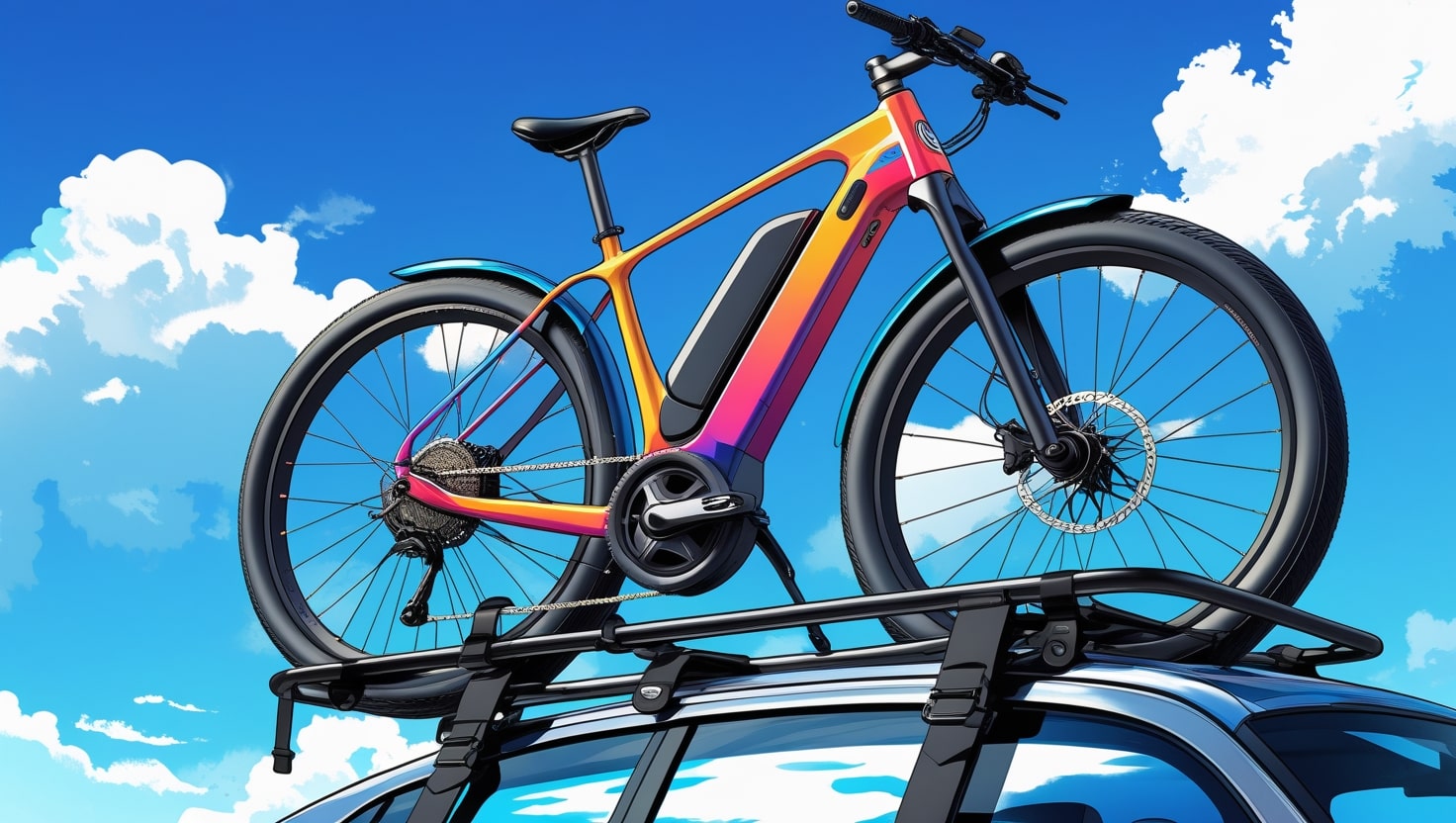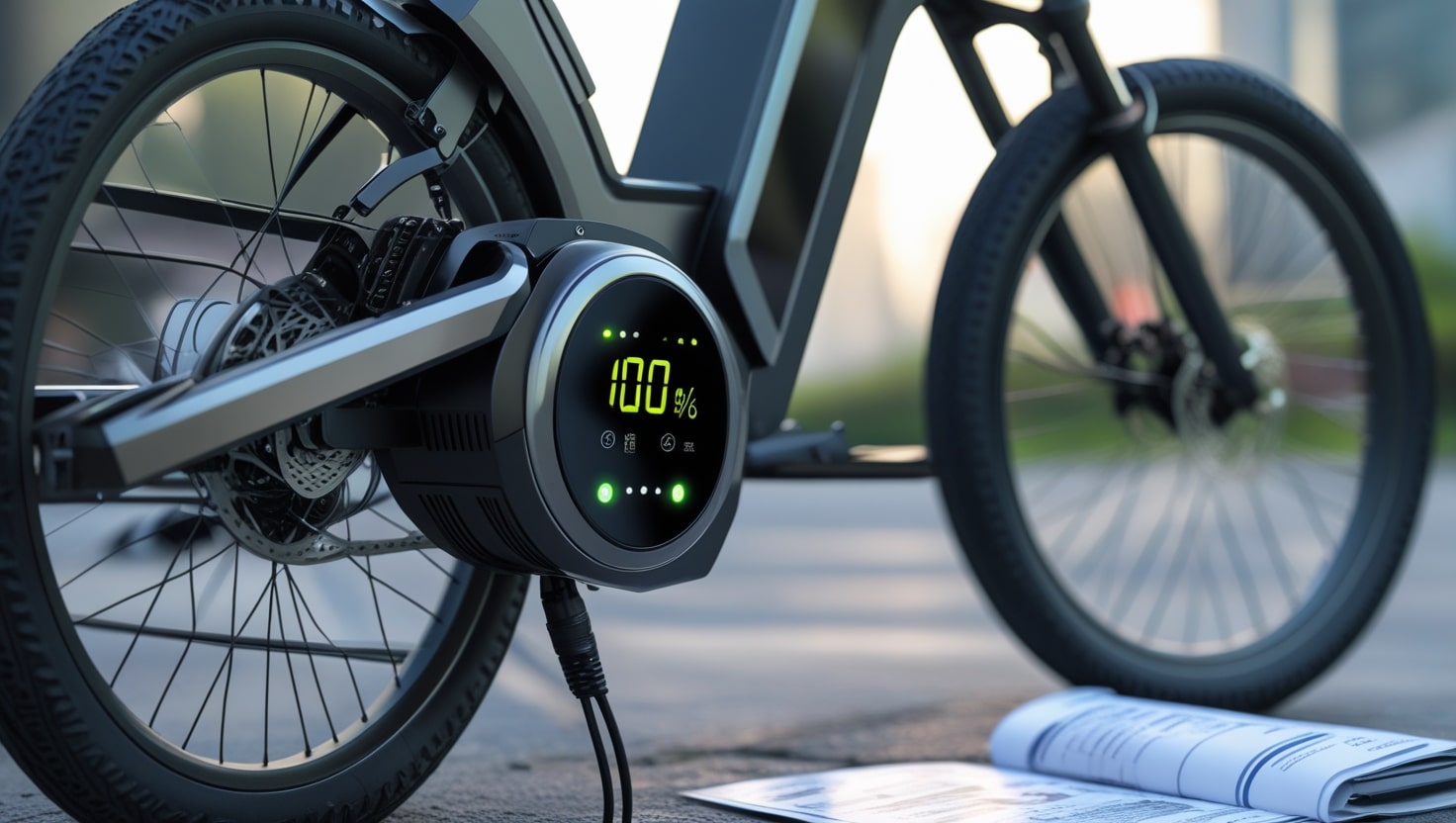As someone who has spent countless hours exploring trails and city streets, I’ve seen the growing trend of cycling firsthand, and it’s easy to notice how the bike market has exploded with diverse varieties of models. When considering the difference between hybrid and mountain bike, understanding your personal preferences and intended cycling conditions is crucial.
Mountain bikes (often called MTBs) are rugged, built specifically for rough terrains, trails, and steep paths. On the other hand, hybrid cycles—commonly known as just “hybrids”—blend the best qualities of road and mountain bikes. With so many types and subtle distinctions available, your final bike intentions matter greatly.
My recommendations typically encourage riders to reflect carefully on their daily routes and riding tastes before choosing between these common yet distinctly different bikes.
What is a Hybrid Bike?

When I first tried a hybrid bicycle, I realized it’s more than just a typical city bike. Imagine blending the best of a road bike and a mountain bike (MTB) into one versatile ride—that’s exactly what hybrids offer. Built with a lightweight structure and frames, these bikes have wide tires with medium tread widths, typically ranging from 1.3 inches to 1.6 inches. This makes them ideal not only for smooth city roads and paved paths but also suitable for mild off-road terrains and trails. Whether you’re looking to commute, casually cycle, or even travel long distances, the hybrid’s comfortable sitting position ensures comfort and reduces fatigue.
One standout example I’ve ridden personally is the OMO Bikes Ladakh Series, a great example of high-quality hybrid bikes. These bikes come with either no-gear or multiple-gear setups, letting riders choose based on their preferred terrains or riding style. They incorporate both rim and disc brake options for quick-stopping brakes and added safety. Whether you’re chasing performance on tough badlands or smooth tarmac, hybrids deliver unmatched excitement, blending adventure with daily functionality.
What is a Mountain Bike (MTB)?

When I first got into off-road cycling, the Mountain Bike (MTB) was my go-to choice, mainly due to its ability to handle rough terrains and challenging trail riding conditions. Unlike standard road bicycles, MTBs come with wide tires, typically ranging from 2.10 inches to 3 inches, featuring large tread patterns that provide excellent surface grip on loose earth, rock, and other tough surfaces. These bikes are often built from sturdy materials like aluminium alloy 6061, robust steel, or lightweight yet strong carbon fiber, creating a rigid structure that’s reliable even in extreme environments.
Additionally, mountain bikes include advanced shock absorbers in both the front and rear, making the ride smoother over bumps and jumps. They are equipped with a wide variety of gears, making it easy to conquer high gradients, while powerful discs ensure safe and effective braking during steep descents and emergency stops—critical for safety in tough conditions.
For those looking for something in between traditional mountain bikes and standard road cycles, hybrid options like the Hybrid Collection offer ideal qualities—blending comfort, sturdiness, and sleek style. These hybrid bikes are suited for your daily business commute, casual discovery of new routes, and virtually any other scenario where versatility matters most, all while maintaining core MTB strengths across different models.
Key Difference Between Hybrid and Mountain bike?
Design and Purpose
From my own experience, riding a mountain bike feels entirely different from hopping onto a hybrid. A mountain bike is designed specifically to help cyclists confidently maneuver over challenging surfaces like rocky trails, uneven dirt paths, and intimidating steep drops. It achieves this through its strong build, equipped with robust shock absorbers and heavy bar tires that offer excellent adherence and stable movement across rough terrains. Additionally, the mountain bike’s unique design places its frame further in front of the rider.
On the other hand, hybrid bikes cleverly amalgamate the best qualities of road and mountain bikes, targeting users who prioritize versatility. Whether your day includes casual commuting, relaxed urban cycling, or regular exercise riding, hybrid cycles are adaptable enough to handle various terrains with ease. Their more upright, comfort-focused positions ensure less strain on your back and shoulders during long rides, and their thinner tires make them faster and lighter.
Frame and Construction
When comparing the construction of Mountain bicycles and Hybrid bikes, you’ll quickly notice significant differences tailored to their distinct purposes. Mountain bicycles usually have rigid constructions designed specifically to handle tough challenges like riding on rough roads, rocky trails, or even jumping. Their frames typically involve robust materials such as durable steel, lightweight aluminium, or even high-end carbon. Additionally, mountain bikes include specialized features like reinforced tubing and extra suspension.
On the other hand, Hybrid bike frames use light materials—primarily aluminium or occasionally carbon—to ensure they remain lightweight for easy riding on city roads. Unlike typical road bikes, hybrids have a slightly different geometry that provides greater riding comfort, even though this design may reduce their overall speed slightly.
Suspension
When riding mountain bikes, one of the first things you’ll notice is the oversized, rougher tires they use, distinctly different from the tires on regular bikes. These larger, rugged tires are specially designed for challenging, loose surfaces and provide superior traction and stability in tough off-road conditions. However, this comes with a trade-off—these tires tend to cause more drag on smooth roads, making rides in the city less efficient.
In contrast, Hybrid Bikes are built to perform well on paved surfaces and milder paths, making them ideal for urban riding. They feature smoother, narrower tires with lower interlocking rolling friction, allowing riders quicker acceleration and an easier glide on tarmac or a gentle gravel track.
Gearing and Brakes
When tackling rough, rugged terrains with challenging steep climbs or tricky downhills, mountain bikes truly shine. They come equipped with advanced, special gears designed specifically to help riders maintain control and balance across unpredictable surfaces. From my own trail experience, mountain bike gearing effortlessly manages demanding conditions, even on slippery, muddy, or wet terrain. Additionally, mountain bikes often have disc brakes, providing a consistently powerful braking system no matter the state of the ground.
On the other hand, hybrid bicycles have a slightly different approach. They typically offer an extensive range of gears suitable for a wide variety of riding conditions—from city flats to moderate slopes. The braking options include either a standard rim brake or an efficient disc brake, both capable of delivering a safe and reliable braking system.
Pros and Cons of Hybrid Bikes and Mountain Bikes

Pros of Hybrid Bikes
A hybrid bike is incredibly versatile and can easily handle various terrains and riding situations.
Its balance between speed and comfort makes every ride both enjoyable and efficient.
Known for its stability and durability, a hybrid offers a consistently reliable performance, making it ideal for diverse riding purposes and occasions.
Due to their great degree of adaptability, hybrids can be tailored to your exact tastes, enabling the bike to perfectly capture your own sense of fashion and individuality.
From a practical viewpoint, hybrid bikes help you save both money and space, thanks to their flexible.
Cons of Hybrid Bikes
A hybrid bike is often seen as a compromise because it might not perform as well as a specialized road bike or mountain bike in certain challenging terrains or riding situations, potentially failing to fully satisfy your specific expectations or riding goals.
Hybrids demand more work and energy to enjoy a smooth and pleasant ride because they are typically heavier and bulkier, making them less nimble and maneuverable.
In addition to being more expensive and sophisticated than a basic bike, hybrids can also be more difficult to maintain and require more care and attention to be in good working order.
Pros of Mountain Bikes
A mountain bike is specially built to be capable and resilient, allowing you to confidently handle rough trails and challenging conditions better than a road bike or hybrid bike.
With superior suspension, excellent braking performance, and lower gearing, mountain bikes give a smooth, controlled ride over bumps, drops, and steep hills—features I’ve personally appreciated on tough trails.
Beyond practicality, riding mountain bikes is an exciting, adventurous, and thrilling way to get a great workout outdoors, adding a sense of freedom and energy to every ride.
Cons of Mountain Bikes
A mountain bike tends to be slower and less efficient on pavement and tarmac compared to a road bike or hybrid bike, which makes it less suitable for commuting or relaxed leisure riding.
Its heavier and more robust build can feel cumbersome and tiresome, especially when the ride doesn’t involve rough or off-road terrain.
I’ve found them difficult to transport and store due to their bulk, making them somewhat inconvenient for everyday urban use.
Additionally, mountain bikes are often more expensive, specialized, and geared toward a niche group of riders, which can feel exclusive and may not be a practical investment if you don’t regularly venture off-road.
Choosing Between a Hybrid Bike and a Mountain Bike

Your riding style: Think about your riding preferences. Do you enjoy smooth, flat roads and prefer to ride fast or ride far for fitness or commute? Or do you prefer rough, steep terrains for adventure and thrill? The type of bike you choose should match the surfaces, situations, and purposes you ride in. A hybrid bike is great if you want something versatile, comfortable for different occasions, and can handle varied paths. But if you love riding off-road on rugged terrain, then a mountain bike would be a better fit.
Your riding frequency: How often you ride also matters. If your riding frequency is high—say, every day or every week—you’ll want a bike that’s durable and stays in good condition. A hybrid bike is often more practical and convenient for frequent riders.
Your riding budget: Your riding budget plays a big role in what bike you can get. If you have a tight budget, go for a simple, affordable bike that meets your basic needs and preferences. A hybrid bike is frequently the better choice in certain situations. If you have a moderate budget or even a generous budget, you might consider investing in a more specialized, high-end bike that aligns with your specific expectations and goals, like a performance-driven mountain bike.
Conclusion
When it comes to selecting between a hybrid cycle and a mountain bike, your personal riding style, level of experience, and the type of terrain you usually ride on play a huge role. If you prefer something more efficient for daily commuting or leisurely cycling on light trails, hybrid bikes offer great flexibility and comfort. On the other hand, mountain bikes are designed for more intense rides and thrilling adventures where rugged paths demand durability and control. In my experience, knowing what’s truly important—whether it’s smoother paths or more technical challenges—helps shape your decision.
FAQs
Can I use a hybrid as a mountain bike?
From my experience, you can sometimes use a Hybrid bike in place of a Mountain bike, but only under certain conditions. A Hybrid cycle is great for urban riding and light paths, and if you add a front suspension, it can handle rough roads or patches of gravel reasonably well. Its versatile usage and medium-range tires make it suitable for moderately uneven roads.
However, when the track gets truly rugged or you plan to ride on tougher trails and off roads, mountain bikes are far more appropriate. They come with thicker tires that offer better grip, especially designed for the nature of aggressive terrain. Also, your cycling frequency matters—if you’re riding rough ground often, the durability and setup of a Mountain bike is the better choice.
Are hybrid bikes good for hills?
In my experience, Hybrid bikes can handle hilly terrains quite well, especially when fitted with an appropriate ratio like 2x or 3x, which helps the pedaling feel neutralized even on steep paved surfaces. The hybrid cycle usually comes with thinner tyres, giving you a faster speed and easier climbing when going up moderate hills compared to a heavier mountain bike. However, if the roads are extremely bumpy or sharp, and the biker values stability and grip over speed, then a mountain bike or MTB becomes the more ideal option for such rough conditions.
Which is faster MTB or hybrid?
When riding on the road, especially city flat roads, Hybrid bikes generally feel faster due to their less resistance compared to MTBs. In fact, as a reference, a new or beginner cyclist can expect an average speed of around 14-15 kmph on an MTB, while on Hybrid cycles, they may reach speeds between 17-20 kmph.
Is a Hybrid bike more comfortable than a mountain bike?
The choice between Hybrid bikes and mountain bikes really depends on the rider, their needs, and the type of road or territory they plan to ride on. From my experience, Hybrid bikes are easier to pedal and feel fast on smooth urban paths, making them a good option for daily usage. On the other hand, mountain bikes offer better grip and often deliver better comfort on rugged trails. The comfort level really varies person to person, and understanding the difference in design and performance can help a rider make the right decision based on what they want to accomplish on their rides.
MTB Vs Hybrid, Which is better for Indian roads?
When choosing between MTBs and hybrid bicycles for Indian roads, it’s helpful to look at both tradition and present needs. While MTBs are among the most sold bicycles today, many still find hybrid bikes more comfortable, especially for daily use on various types of roads. Over the years, thin tire cycles like the old model roadster—a classic black colour bicycle—have had a strong existence across India, easily handling all kinds of terrain. In my view, for beginners, hybrid cycles are a great fit for any kind of Indian roads, unless there’s a specific need for a Mountain Bike built for rougher conditions. The lightweight frame and thin tires of hybrids resemble traditional models while offering modern comfort.








